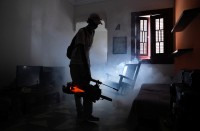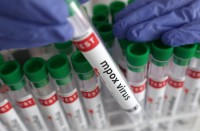Artificial hearts have a hard plastic protective casing and weigh 900 grams. They operate like a natural human heart, have two ventricles and even beat.
Implanting an artificial heart involves cutting the failing heart under the auricles, to ensure blood-flow to the organs.
A biocompatible interface is sutured to the auricles. The device — comprising two ventricular cavities and four valves — clips onto this interface.
Both ventricular cavities are divided into two parts, each separated by a double-sided bio-membrane. The left membrane, for the blood, is made of cow heart tissue and is treated to avoid the body rejecting it. The other, for the actioning fluid and motor pumps, is made of polyurethane.
The heartbeat is produced in a two-phase process:
The two motor-pump units alternatively displace the actioning fluid contained in a flexible external bag. When the hydraulic compartment empties, the withdrawal of the bio-membrane sucks blood into the ventricle. When it fills up, the bio-membrane pumps blood into the arteries. Biological admission and ejection valves ensure the blood only flows in one direction.
The battery has a five to six-hour autonomy and is linked up to an external charger via a cable through the skin.
Current models are due to last for five years — the equivalent of about 230 million heartbeats.
https://youtu.be/nRL51G5ULYY
FRED GARET, MARIAN HENBEST / AFP VIDEOGRAPHICS / AFP







